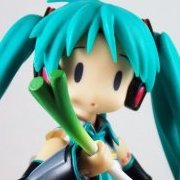
After 3 years of planning, modeling, texturing, and a lot of engine hopping, I was able to create a playable demo in the Leadwerks Engine for Windows and Linux (Debian/Ubuntu/Mint). You can download the demo from this page. A small demo was created not only to test the basic elements of the game in the new engine, but to also give back to those who have been supporting this project since I started talking about it.
I'm also announcing that from here on out that the development will be more open. How open? Well first you can always check the Trello page to see the progress at any time, If you wish to help, drop me an e-mail. Feed back is welcomed with opened arms. You can do this simply by e-mail or twitter @reepblue. I'll do my best to respond if necessary.
About Vectronic
Vectronic is a first-person environmental puzzle game inspired other games of the same genre such as Portal, Quadrum Conundrum, and Q.U.B.E. Players must solve puzzles using special power balls that effect boxes that changes their behavior in the world. For more information, please visit the Q&A. For additional help, click here.
Please let me know what you think. Although a short primitive demo, this is a big milestone for the project in the indie path.
- Read more...
- 10 comments
- 4,491 views

